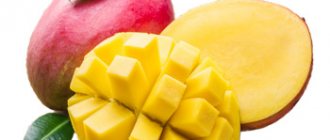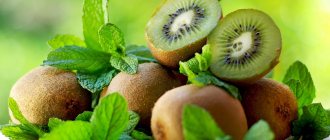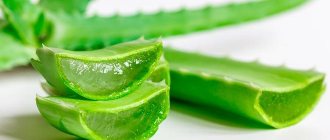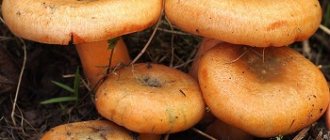What is agar-agar?
Agar-agar is an oligosaccharide produced by certain species of brown and red algae. A distinctive feature of macromolecules is the strict alternation of structural units - agarose and agaropectin. It is believed that it is agar-agar that provides high adhesion strength between cells and each other, so that algae are not damaged by underwater currents. In addition, the molecules are highly hydrophilic, protecting the algae from drying out when it lands on land.
Agar-agar dissolves well in hot water (t≥85°C), and when cooled it forms a strong gel. Unlike other gelling agents, agar jelly melts easily when reheated to 85-85°C.
What is agar-agar made from and how is it produced?
The main raw materials for the production of agar-agar are algae of the genus Gracilaria and Gelidium, growing in the coastal zones of the Pacific and Atlantic Oceans. During Soviet times, a technology was developed using Ahnfeltia as a raw material - dark burgundy, almost black algae mined in the Kuril Islands area. Unfortunately, due to economic factors, our own production turned out to be unprofitable, although agar-agar produced in the USSR was superior in functional properties to imported analogues. As of 2010, global production of agar-agar is 4,800 tons per year, with more than half of this amount (4,500 tons) produced in Japan.
Agar-agar is obtained from algae by hot water extraction. Next, alkaline treatment is carried out, during which impurities of inorganic origin precipitate. The solution is then finely purified by successive freezing and thawing, resulting in the separation of a pure gel from the mother liquor. After drying, the finished product is obtained in the form of powder or flakes, which is packaged in a sealed, light-proof film and sent to consumers.
Where is agar-agar used?
Due to its gelling properties, agar-agar is actively used in the food industry in the production of confectionery, food concentrates, desserts, drinks, and medical nutrition products. The second largest area of consumption is microbiology: agar gels are used as a solid medium for the cultivation of microorganisms (bacteria, fungi). About 10% of agar-agar is further processed to produce agarose, used as a carrier in gel chromatography, immunodiffusion and other scientific purposes.
What does agar-agar taste and smell like?
A high-quality product has a neutral, subtle odor, vaguely reminiscent of the aroma of freshly cut grass. The smell is detected only in the first minutes after opening the package and disappears very quickly. The taste is slightly sweet (a slight bitterness is allowed, which is not noticeable when dissolved). Organoleptic properties strongly depend on the ratio of agaropectin and agarose in the composition of agar-agar, on production technology and on the degree of purification.
An unpleasant smell or taste indicates that the product was produced in artisanal conditions in China, or that the storage period and conditions were violated.
Where to buy agar-agar?
The bulk of agar-agar is intended for industrial consumption, but this ingredient can also be found in retail stores. Usually the powder is packaged in plastic jars or plastic film bags, the weight of one unit of goods is from 20 to 100 grams. Larger quantities can be purchased from companies that sell food ingredients. When choosing, you should give preference to a product made in Japan, Indonesia, Chile, Morocco. If you have the opportunity to examine the appearance, the best agar-agar is a fine, cream-colored powder (or white with a yellow tint). Agar-agar is sold in the baking departments of supermarkets or in specialized online stores.
How to store agar-agar?
When packaged, the product should be stored at room temperature. If the powder is in a transparent container, then it is necessary to exclude access to direct sunlight in order to avoid photochemical oxidation processes, which results in the appearance of an extraneous odor. The opened package is tightly closed to prevent moisture from entering and stored in the refrigerator.
Shelf life, subject to storage conditions, is from 12 to 18 months (set by the manufacturer).
Chemical composition and calorie content
100 grams of agar-agar contains:
- 5 g carbohydrates;
- 6 grams of protein;
The energy value of the product is 26 kcal (106 kJ)/100g.
In addition to nutrients, agar-agar contains a complex of vitamins and microelements: B6, K, PP, copper, selenium, iodine, phosphorus, zinc, potassium, as well as other substances beneficial to the body. The content of magnesium and manganese in 100 grams of agar-agar is 2 times higher than the daily recommended intake.
From a chemical point of view, the main substances that form the structure of the oligosaccharide are carbon, oxygen and hydrogen. Long chains practically do not split, and plant fiber passes through the gastrointestinal tract in transit.
Which is better to choose: agar-agar or gelatin?
From a functional point of view, both agar-agar and gelatin are needed to form the jelly-like consistency of the product. The properties of these substances are similar, but not identical. Thus, gelatin forms a strong jelly that can be cut with a knife and broken. Agar-agar, unlike gelatin, is more plastic and holds its shape well even at elevated room temperatures. In addition, agar is free from such drawbacks as an unpleasant specific odor, reminiscent of glue or the aroma of not quite fresh meat products. For vegetarians, there is no question of choice, since gelatin is made exclusively from animal raw materials, which is unacceptable for a vegan diet. Agar-agar can be considered a vegetable substitute for gelatin. The question of the possibility of transmission of the mad cow disease virus through gelatin remains unresolved. In the food industry, agar is traditionally used in the production of confectionery and desserts, and gelatin is used for meat products.
Coconut panna cotta
For breakfast or a hearty snack, a light creamy dessert of Italian origin is suitable. The traditional recipe uses cream, but I like to experiment, so I used coconut milk as a base. Don’t skimp and buy the highest quality product, then you get amazing yummy!
Compound:
- coconut milk - can;
- sugar - 120 g;
- 1.5 tsp. agar-agar;
- a couple of drops of vanilla syrup;
- corn starch - tsp;
- water - 2 tbsp.
How to cook:
Heat the coconut milk, add sugar and add a little vanilla if you like. In a separate cup, pour 2 tablespoons of agar. Warm water, stir and wait 7-10 minutes. When the coconut milk boils, pour the contents of the cup into it and cook for 3-4 minutes.
Remove the pan from the heat after the time has elapsed, wait until the mass has cooled slightly. Prepare silicone or glass molds and grease them with a thin layer of butter.
Spoon the thick mixture so that there are no voids left, put the molds in the cold for 1-2 hours. Place the finished panna cotta on a flat plate, garnish with fresh berries and pour over syrup, serve the dessert chilled with coffee or tea.
Useful properties of agar-agar
Disputes periodically flare up between nutritionists about the benefits and harms of agar-agar. In terms of the content of vitamins, microelements and amino acids, agar-agar is a valuable food additive. Carbohydrates, from which the chain of oligosaccharides is built, are not absorbed by the body, so agar-agar is a good prophylactic agent that reduces the risk of gaining extra pounds. According to nutritionists, agar-agar helps reduce blood cholesterol, normalizes blood sugar, suppresses high acidity, stimulates peristalsis, and helps strengthen joints. With heavy metals, agar-agar molecules form chelate complexes, which are eliminated from the body naturally. As can be seen from the above, there are quite a lot of arguments for the use of agar-agar for medicinal purposes.
Can this product cause harm?
There are no serious contraindications to the use of this thickener. Rather, it is about the extent of its use.
Considering that agar-agar has the property of a mild laxative, you should not use it too much, as severe diarrhea may begin. Experts believe that 4 grams of this substance is the maximum daily requirement.
Thus, agar-agar is a good alternative to the usual gelatin. Not only is it an excellent food thickener, but it also has a number of beneficial properties.
The composition of agar-agar and the trace elements and vitamins it contains make it possible to use it not only in cooking, but also for medicinal and health purposes, in dietetics and cosmetology.
If you are not a fan of reading, then especially for you we have prepared a short video about everything you wanted to know about agar-agar:
The use of agar-agar in cosmetology
The food industry is not the only area where agar-agar is used. Due to its properties, it is actively used in cosmetology for rejuvenating, cleansing and moisturizing masks, detox procedures, and wraps. Biologically active substances help smooth out wrinkles, improve skin color, cleanse pores, relieve the inflammatory process of acne, strengthen nails and hair. As a thickener, agar-agar is included in cosmetic products to give them a certain consistency. The limitation on the use of agar-containing cosmetics is individual intolerance.
Agar-agar for weight loss
Since this food additive has a low calorie content, it is actively used in the production of dietary products. Due to its neutral taste and smell, agar-agar can be safely added to hot drinks and dishes.
It has been proven that the maximum weight loss effect is observed when drinking drinks with agar-agar 15-20 minutes before meals.
At body temperature, gelation begins, which gives a feeling of fullness and improves digestion. The benefit of agar-agar also lies in the fact that dietary fiber is an excellent nutrient medium for microorganisms found in the small intestine. The easiest way to prepare the drink is to brew tea (1 g of agar per 250 ml). A hearty and tasty dish is a thick cream soup made from vegetable or mushroom broth. People suffering from various gastrointestinal diseases need to consult a gastroenterologist.
If you want to lose weight
This magical powder will help the lady get rid of a few extra pounds.
As you remember, agar-agar consists of fiber. Due to its ability to swell in the stomach, a feeling of fullness quickly comes.
We recommend reading:
- Recipe for winter cherry tomatoes in their own juice - the most delicious options
Brine for tomatoes per 1 liter of water: how much salt and sugar and vinegar
How to pickle mushrooms at home - a step-by-step simple and quick recipe in jars using hot and cold methods
Agar-agar also has the ability to absorb fats and remove them from the body. All these properties make agar-agar indispensable in any diet.
Use of agar-agar in cooking
When used correctly, agar-agar can become the “highlight” of any dish - side dishes, drinks, baked goods, desserts, first courses. The food additive helps achieve the desired consistency, which makes the appearance of dishes more attractive and gives an interesting organoleptic taste. Since the properties of agar may vary depending on the manufacturer, before adding it to the main dish, it is advisable to make a small sample and check the consistency when it cools. A feature of agar jelly is that it hardens very quickly, so all the ingredients included in the recipe should be on hand.
Where do they add it?
Agar-agar can be used to prepare broths, vegetable and fruit purees, molecular culinary dishes, pastille products (marshmallows, marshmallows), marmalade, dairy desserts, and jellied dishes. Usually the powder is added to boiling liquid, and then the dish is prepared according to the traditional recipe.
How many grams of agar-agar are in a teaspoon?
The specific gravity of the powder varies widely depending on the degree of grinding, which affects the bulk density.
On average, 2.5-3.0 grams of fine powder or 1.8-2.0 grams of flakes (scales) are placed in a teaspoon (with a slide).
How to breed correctly?
Depending on the dish, agar-agar can be diluted in two ways:
- Soak a measured amount in water at room temperature and leave to swell for 15-20 minutes, then bring to a boil and stir the solution until the agar is completely dissolved.
- The powder is added to drinks with a sour taste when heated to 60-70°C. The higher the acidity, the more agar is needed for gelation.
How much to add?
The dosage of agar-agar depends on the type of dish and the desired gel strength. The standard and most common recommendation is: 1 teaspoon per glass of liquid (250 ml).
Recipes
Agar-agar has become available to a wide range of home cooking enthusiasts, and therefore many recipes using this food additive have appeared. If previously the only gelling agent was gelatin, then red algae powder has opened up new opportunities for culinary experiments at home. The use of agar-agar for dietary purposes has not yet become widespread, and the main purpose of its use is to obtain the desired consistency of the finished dish.
Cake pigeon's milk"
Amazing taste is achieved through the perfect combination of sponge cakes and delicate soufflé. The list of required ingredients is quite modest. For the test you will need:
- 100 g each of sugar and butter;
- 110 g flour;
- 2 yolks;
- a packet of baking powder.
For the soufflé:
- 2 squirrels;
- a pack of butter (preferably 82% fat);
- 5 tablespoons of condensed milk;
- a tablespoon of freshly squeezed lemon juice;
- 140 ml water;
- 2 cups sugar (“heaped”);
- 2 teaspoons agar-agar powder;
- vanillin (to taste).
For the glaze:
- Dark chocolate bar;
- 100 g butter.
Cooking steps:
- Agar-agar is soaked in water for 4-5 hours.
- Separate the yolks from the whites.
- Beat butter, heated to room temperature, with sugar until fluffy, then add the yolks and continue beating for 1.5-2 minutes.
- Add the sifted flour and baking powder and mix with a wooden spoon or spatula.
- Bake the cakes on parchment paper at 200°C. Readiness is determined by the “match” test (the dough should not stick to the inserted match).
- Soufflé: beat soft butter with condensed milk and vanilla until fluffy white mass.
- Bring the syrup consisting of soaked agar, sugar and vanillin to a boil. At the same time, in a deep bowl, beat the whites until fluffy. At the end of whipping, add lemon juice.
- Cool the syrup for 5 minutes and add it into the protein mass in a thin stream while stirring at low speed. Then add the cream of butter and condensed milk in small portions.
- Place the cakes in the mold, pouring the soufflé between them, and leave to harden in the refrigerator.
- Glaze: melt a chocolate bar in a water bath, add butter and stir until smooth. Apply to cooled cake.
Homemade marmalade recipe
If there is any doubt about the presence of harmful food additives in store-bought sweets, then you can quickly and easily prepare marmalade at home. You will need freshly squeezed fruit juice (200 ml), sugar (100 g) and agar-agar (1 teaspoon).
- Pour agar-agar into 150 ml of juice and leave for 30-40 minutes.
- Bring the remaining juice to a boil, add sugar, pour in the juice with agar-agar and cook for 4-5 minutes.
- Cool the finished mixture slightly, pour into silicone molds and leave until completely hardened. If desired, you can add food coloring to the mixture.
Jelly
A tasty, tender, low-calorie dessert for the holiday table is prepared simply and quickly. You can use fruit juice, milk, cocoa as a base. The amount of agar-agar is calculated from the ratio of 1 teaspoon per glass of liquid.
Agar-agar is soaked in half of the fruit drink, juice or cocoa for 30-40 minutes. The rest is brought to a boil over low heat. The swollen agar solution is poured into the boiling liquid in a thin stream, brought to a boil again, and then immediately poured into the prepared forms. You can add pieces of fruit to the juice. If desired, you can make multi-colored multi-layer jelly by sequentially filling the molds with multi-colored liquids.
Panna cotta
The original name of the creamy jelly is Panna Cotta. Dessert is the hallmark of Italian cuisine. To prepare you will need:
- 800 ml cream (10%);
- a packet of vanillin (1.5 g);
- 100 g sugar;
- 5 g agar-agar;
for berry sauce - 200 g of sugar and any berries.
Bring the cream to a boil over low heat, but do not boil. Add sugar, vanillin, agar-agar and mix again. After the powder has completely dissolved, pour the mixture into glasses, cover with cling film and leave for 1 hour to harden. During this time, prepare the sauce by mixing the berries with sugar and bringing the mixture to a boil. Pour the sauce over the creamy jelly just before serving.
Apple marshmallow
A healthy, tender delicacy for the whole family is prepared quickly and easily. You will need:
- 250 g of homogeneous applesauce;
- 700 g sugar;
- egg white (1 pc.);
- 8 g agar-agar;
- 160 ml of water and a sachet of vanillin.
The puree is made from baked apples with the addition of 250 g of sugar. While the grains of sugar dissolve in the applesauce, the syrup is prepared. The remaining sugar is added to the solution with pre-soaked agar-agar (8 g + 160 ml of water), and the mixture is brought to a boil. Remove the syrup from the heat and let cool slightly. During this time, add half the protein to the applesauce and beat with a mixer at high speed until the mass turns white. Without turning off the mixer, pour in the syrup in a thin stream and continue beating until it reaches a stable foam. Transfer the mixture into a pastry bag and add marshmallows. For variety, the product can be coated with chocolate glaze after hardening.
Banana marshmallows
A fragrant dessert that will not leave any sweet tooth indifferent. You will need:
- 3 medium bananas (250 g peeled);
- 350 g sugar;
- ½ glass of water;
- white of one egg;
- 5 g agar-agar.
Grind bananas and 150 g of sugar in a blender until smooth; Place the mixture on low heat, bring to a boil and simmer for 3-4 minutes. Remove from heat, cool to room temperature. While cooling, heat the pre-soaked agar-agar (5 g + 100 g of water), add the remaining sugar and vanillin, and boil until the ingredients are completely dissolved. Beat the cooled banana puree with a mixer at high speed until the mixture is saturated with air, then pour in the finished syrup in a thin stream. Continue beating until a fluffy air mass forms. Depositing is done through a pastry bag onto parchment or a wooden cutting board sprinkled with starch. It will take 4-5 hours for final hardening.
Jam
Agar-agar is added to jam to obtain a product with a thicker consistency. The preparation technology is practically no different from the traditional one, with the exception that after the boiling begins and the foam is removed, agar-agar is added to the mixture, which must first be diluted in water. After cooking for 10-15 minutes, the jam is poured into sterilized jars. The exact amount of thickener is selected experimentally depending on the type of berries and the desired consistency of the jam.
Confiture with agar-agar
The functional purpose of agar-agar in confiture is to obtain a product with a thick consistency. With the traditional method, cooking the fruit mass with sugar takes a lot of time. With agar-agar, the process is shortened by at least half.
For each type of berry or fruit, the amount of agar-agar is selected individually.
The powder is pre-soaked in a small amount of water and poured into the boiling berry mass. After boiling for 5-10 minutes, the finished product is poured into sterilized jars.
Plum marmalade
If you think that making sweets at home is difficult, I will clear your doubts with a simple recipe. I suggest making plum-based marmalade. By the way, if you don’t find it, then quince and fresh berries will do. The main ingredient is fruit juice, the more natural and thick it is, the better.
Compound:
- 400 g fresh plums;
- 1/2 tsp. agar-agar;
- 50 ml water;
- 4 tbsp. Sahara;
- seasonings as desired (cinnamon, vanilla).
How to cook:
Heat water in the microwave, add agar to it and leave until it swells. This usually takes about 10-15 minutes. Do not leave the mixture for too long, otherwise it will thicken quickly.
Sort the plums, wash them, cut them into halves and remove the pits. Grind the fruits in a blender until puree, then transfer to a saucepan and add sugar. The plum should give juice. Add your favorite spices at your discretion and mix everything.
Heat the contents of the pan over medium heat. When the plum boils, reduce the heat and simmer for 3-4 minutes. If a lot of juice is released, increase the cooking time.
Pour the swollen agar into the plum preparation, mix everything well and cook for 3-4 minutes after boiling. When the contents of the pan thicken, remove it from the heat.
Place a tablespoon of the slightly cooled mixture into small silicone molds. You can put it in one large mold, if you don’t have portions at home, just line the bottom with parchment. Leave the marmalade in the refrigerator until completely hardened. You can try after 6-8 hours. Bon appetit!
How to replace agar-agar?
In cooking, among food additives used as gelling agents, pectin and gelatin are most widely used. The technology for preparing dishes with these ingredients will differ, as will the consistency of the resulting products. When choosing gelatin, agar or pectin, you need to remember that pectin produces weak, easily broken gels, while gelatin produces strong jellies. In addition, when using gelatin, a foreign smell and taste may appear that is not always compatible with the prepared dish. The ratio of agar-agar and gelatin in the recipes will also be different.
Interesting Facts
Agar-agar is a healthy product of plant origin. Despite the high price, it is worth the money paid for it. Due to the highest gelling properties, it is consumed in small quantities.
And if you often pamper your family with beautiful cakes, for example, you like to make figures from homemade mastic, then you will definitely appreciate all the advantages of agar compared to gelatin.
Interesting facts about agar-agar
- Over time, any products and ingredients become familiar, but there is always information even for those who know everything and a little more. Agar-agar is no exception. To conclude the article, here are 6 interesting facts about algae powder.
- The Japanese first noticed the gelling ability of red algae decoction at the end of the 16th century. The soup that was accidentally left with the addition of underwater vegetation turned into jelly the next morning, and after drying, it crumbled into powder.
- Agar-agar gel is resistant to freeze/thaw cycles and reheating.
- In large doses, agar-agar is harmful because it has a powerful laxative effect.
- Agar-agar is not combined with products containing oxalic acid - rhubarb, sorrel, spinach due to a possible negative effect on the liver.
- On food labels, agar-agar is hidden behind the designation E406.
- In the 70s of the last century, the chief technologist of the Primorsky confectionery factory, A. Chulkova, received the title of Hero of Socialist Labor for the development and launch of production of Bird's Milk sweets, the “highlight” of which was the agar-agar used in preparing the filling.











